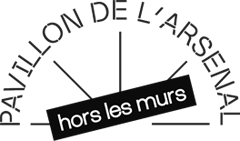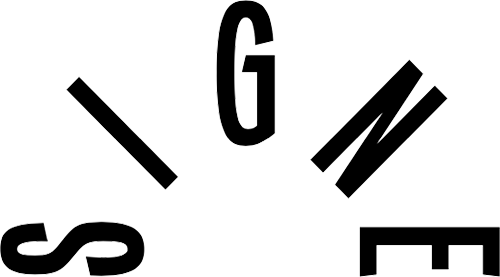As a result of first prize in a 1996 design competition Behnisch, Behnisch & Partner were awarded the commission for the new administrative headquarters for the Norddeutsche Landesbank in Hanover. The new building lies between the old city centre to the north and turn-of-last-century residential districts to the south and occupies an entire city block.
In accordance with urban-planning guidelines the 4 to 7 storey, shallow-plan perimeter block building is aligned with the existing streets. From the exterior it resembles the traditional city block, as such complementing both the pattern and scale of its surroundings. At its centre, protected from the noise of the heavily trafficked streets, lies the heart of the complex, a large, new public courtyard framed by the perimeter building.
Characterized, but not dominated by the daily operations of the bank itself, the courtyard is enlivened by large reflecting pools, public art, paths, terraces and extensive planting of the various roof gardens. The organization of the building is such that the main entrance foyer, exhibition spaces, shops and public restaurants surround this court ensuring that the public domain extends across the site, that the streetscape benefits and that the building truly contributes to city life. The administration facilities begin on the first floor and are reached from the entrance hall via a generous stair and numerous lifts. From this central point glass-covered bridges, openable during the summer months, connect to the various parts of the complex.
At the north-eastern corner of the complex, the distinct high-rise structure develops out of the perimeter block as it turns inwards towards the centre of the courtyard. The high-rise part of the building accommodates lounges, conference facilities, restaurants and executive offices, reaching a height of nearly eighty metres. Rather than referring stylistically to the immediate surroundings, this structure responds to the historical downtown geometries instead of the orthogonal grid of the town planning post-war city. The freely developed sculptural form has become a new landmark, complementing both the neighbouring tower of the city hall and the city skyline.
A nearly 20m high steel-glass construction on top of the building including special panes with a metal coating produces interesting effects in yellow and blue. These effects vary as the position of the sun changes. At night this structure is lit by diodes.
The blocks addressing the streets were planned in such a way that economically efficient office layouts can be realised. The various building parts provide for different office depths, so that all common office types (open plan, individual, cellular, combined, team office, two rows and three rows of offices) can be realised.
Great attention has been paid to creating a pleasant and light working atmosphere. Most of the partitions consist of a cupboard system with sliding doors which has been specifically developed for this building. This system is very flexible and can be removed whenever necessary. Tea kitchens and other communicative areas introduce a certain rhythm to the office floors. - Behnisch, Behnisch & Partner
Maîtrise d'oeuvre : Behnisch, Behnisch & Partner
Maîtrise d'ouvrage : Norddeutsche Landesbank
In accordance with urban-planning guidelines the 4 to 7 storey, shallow-plan perimeter block building is aligned with the existing streets. From the exterior it resembles the traditional city block, as such complementing both the pattern and scale of its surroundings. At its centre, protected from the noise of the heavily trafficked streets, lies the heart of the complex, a large, new public courtyard framed by the perimeter building.
Characterized, but not dominated by the daily operations of the bank itself, the courtyard is enlivened by large reflecting pools, public art, paths, terraces and extensive planting of the various roof gardens. The organization of the building is such that the main entrance foyer, exhibition spaces, shops and public restaurants surround this court ensuring that the public domain extends across the site, that the streetscape benefits and that the building truly contributes to city life. The administration facilities begin on the first floor and are reached from the entrance hall via a generous stair and numerous lifts. From this central point glass-covered bridges, openable during the summer months, connect to the various parts of the complex.
At the north-eastern corner of the complex, the distinct high-rise structure develops out of the perimeter block as it turns inwards towards the centre of the courtyard. The high-rise part of the building accommodates lounges, conference facilities, restaurants and executive offices, reaching a height of nearly eighty metres. Rather than referring stylistically to the immediate surroundings, this structure responds to the historical downtown geometries instead of the orthogonal grid of the town planning post-war city. The freely developed sculptural form has become a new landmark, complementing both the neighbouring tower of the city hall and the city skyline.
A nearly 20m high steel-glass construction on top of the building including special panes with a metal coating produces interesting effects in yellow and blue. These effects vary as the position of the sun changes. At night this structure is lit by diodes.
The blocks addressing the streets were planned in such a way that economically efficient office layouts can be realised. The various building parts provide for different office depths, so that all common office types (open plan, individual, cellular, combined, team office, two rows and three rows of offices) can be realised.
Great attention has been paid to creating a pleasant and light working atmosphere. Most of the partitions consist of a cupboard system with sliding doors which has been specifically developed for this building. This system is very flexible and can be removed whenever necessary. Tea kitchens and other communicative areas introduce a certain rhythm to the office floors. - Behnisch, Behnisch & Partner
Maîtrise d'oeuvre : Behnisch, Behnisch & Partner
Maîtrise d'ouvrage : Norddeutsche Landesbank


